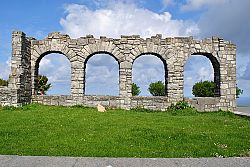

According to the countryside charity, the Campaign to Protect Rural England (CPRE), in the past 10 years there has been only 1 in 10 homes built on land released from the green belt, that has been seen as affordable.
The Charity's Report claimed that there are proposals for 266,000 homes on undeveloped green belt land in advanced local plans, and a third of these are likely to be classified as affordable. Harmful development of the green belt, said to be "often in the guise" of providing affordable housing, is "squandering a valuable asset" at a time when it is needed for health, wellbeing and addressing the climate crisis. The CRPE believe that green belt development is "inefficient and land hungry" and the Report found that the average density of homes in the green belt is 14 dwellings a hectare, this compared with an average of 31 outside of the green belt.
The Charity recommends brownfield sites as a better option to build homes, and as an enhancement of the green belt so that it is valued as much by local authorities, the Government and developers as it is by local communities. It has also suggested the introduction of stronger evidence-based tests for planning proposals.
Tom Fyans, the deputy chief executive of the CPRE, said that building homes on the green belt is not the answer to the housing crisis.
"Indeed, in terms of the green belt, it's clear that we are reaching a tipping point. The increasing number of new homes proposed on the green belt has continued to rise since the report was first undertaken in 2012, despite the fact that these homes are not delivering promised affordable housing. We must not allow our green belt to be gobbled up, but instead focus on building affordable homes in which young struggling families can actually live."
Fyans added that the countryside around urban areas provides a huge opportunity that can help to address the climate emergency and biodiversity crisis, while supporting the improved health and wellbeing of everyone.
"Better ways to tackle the housing crisis exist, such as a 'brownfield first' policy. Our research shows that there is enough brownfield land to make way for more than one million homes. CPRE is calling on the Government to start implementing new and existing positive solutions now to ensure that future generations can enjoy these much-loved landscapes."
For more information on this subject, see: